How To Solve The Resultant Vector
To find the magnitude and angle of a resultant force we. How do you use the analytical method to solve the resultant vector.
Resultant As Magnitude And Direction Ck 12 Foundation
Hence the resultant of the two vectors is 12i 9j - 15k.

How to solve the resultant vector. Use the Pythagorean Theorem to find the magnitude of the resultant vector. To determine the magnitude measure the length of resultant R and to find out the direction measure the angle of the resultant with the x-axis. Begingroup Have you learned how to add vectors.
But they are in the same direction then we cannot add directly. Find the resultant of the vectors having magnitudes of 5 units 6 units and are inclined to each other at an angle of 60 degrees. An explanation of the difference between vectors and scalars and a demonstration of how to calculate the resultant of two vectorsBy Cowen Physics wwwcowe.
How to solve resultant vector using polygon method. The two vectors are A 5 units B 6 units and the angle 60. I tried to calculate the resultant vector by using the equation R A2 B2 2ABCos.
The resultant of two vectors can be done in different methods like 1 Using the Triangle Law 2 Using the Law of Parallelogram and 3 using Rectangular Components Pythagoras Theorem. What is the resultant vector. There are a two different ways to calculate the resultant vector.
To get the magnitude R of the resultant. D x 2 x 1 2 y 2 y 1 2. Identify the x- and y-axes that will be used in the problem.
The parallelogram method to calculate resultant vector. The vector A 5i 6j is rotated through an 45 about the Z axis in the anticlockwise direction. To draw the resultant vector join the tail of the first vector with the second vectors head and put the arrowhead.
The resultant vector is the vector that results from adding two or more vectors together. The resultant vector can be obtained by the following formula. Find the components of the resultant along each axis by adding the components of the individual vectors along that axis.
Methods for calculating a Resultant Vector. Endgroup Marcus M Jul 21 15 at 2133 begingroup Sofar I only know how to add them just by adding up the corresponding numbers. Learn a graphical method of finding resultant vectors in this physics tutorial involving a boat crossing a flowing riverA resultant vector can be found by p.
I am confused how to do it graphically the head-tail way endgroup Jill Jul 21 15 at 2136. Find magnitude of the resultant force using the new vector equation and the distance formula. Resultant Vector Formula The quantities that have both magnitude and direction are called vectors.
Create vector equations for each of the given forces. R P 2 Q 2 2PQcos. Ultimately what you would like to know is the net effect of both the golf swing and the wind acting together on the ball.
Where W weight of the box F dragging force N normal force f friction force. Among these three methods the third one is quite handy to solve vector numerical problems. If they are in the opposite direction or same direction then we can add and subtract directly.
About Press Copyright Contact us Creators Advertise Developers Terms Privacy Policy Safety How YouTube works Test new features Press Copyright Contact us Creators. If you know the two components you can put them together with the Pythagorean theorem to find the magnitude of the resultant vector. Getting vector resultant using polygon method 1.
The formula for calculating the resultant of two vectors is. Step 1Calculate the horizontal and vertical components of each force AB and C. Add the vector equations together to get the vector equation of the resultant force.
The resultant force is the vector sum between the components. Since it is rotated in anticlockwise direction its direction changes. The head to tail method to calculate a resultant which involves lining up the head of the one vector with the tail of the other.

Determine Resultant Of Two Vectors Using Pythagorean Theorem Solved Problems In Basic Physics

Find The Magnitude And Direction Of The Resultant Of Two Vectors A And B In The Terms Of Their M Youtube

Resultant Vector Physics Engineers Edge
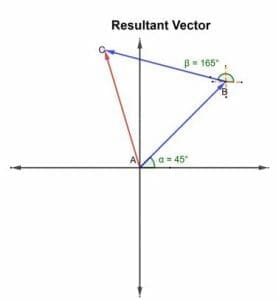
Resultant Vector Explanation And Examples
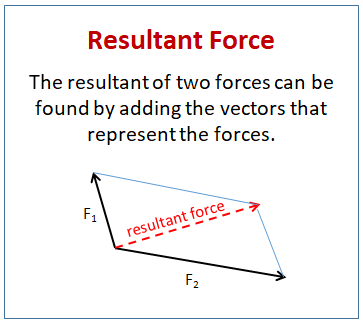
The Resultant Of Two Forces Solutions Examples Videos Worksheets Games Activities

Two Forces 3n And 4n Are Acting Perpendicular To Each Other What Is The Magnitude Of The Resultant Force And How Quora

How To Find The Direction Of The Resultant Of A Vector Quora

How To Find The Resultant Of Two Vectors Youtube

Resultant Vector Definition Formula Video Lesson Transcript Study Com

Vector Application Find Magnitude And Angle Of The Resultant Force Youtube
How Do I Determine The Resultant Vector R From R A B Physics Forums
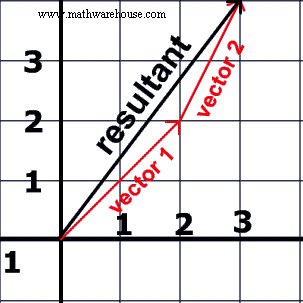
Resultant Vector How To Calculate A Resultant Using The Parallelogram Method And The Head To Tail Method A Resultant Is Simply

Vector Application Find Magnitude And Angle Of The Resultant Force Youtube
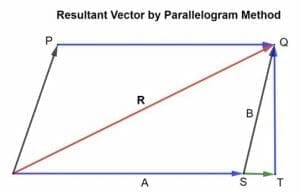
Resultant Vector Explanation And Examples
What Is The Angle Between Two Vectors Of Equal Magnitude When The Magnitude Of Their Sum Is The Same As The Magnitude Of Each Vector Quora

Question Video Measuring The Magnitude Of A Resultant Vector Nagwa
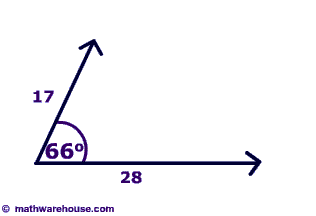
Resultant Vector How To Calculate A Resultant Using The Parallelogram Method And The Head To Tail Method A Resultant Is Simply

Question Video Finding The Resultant Of Two Vectors Using The Parallelogram Method Nagwa


Post a Comment for "How To Solve The Resultant Vector"